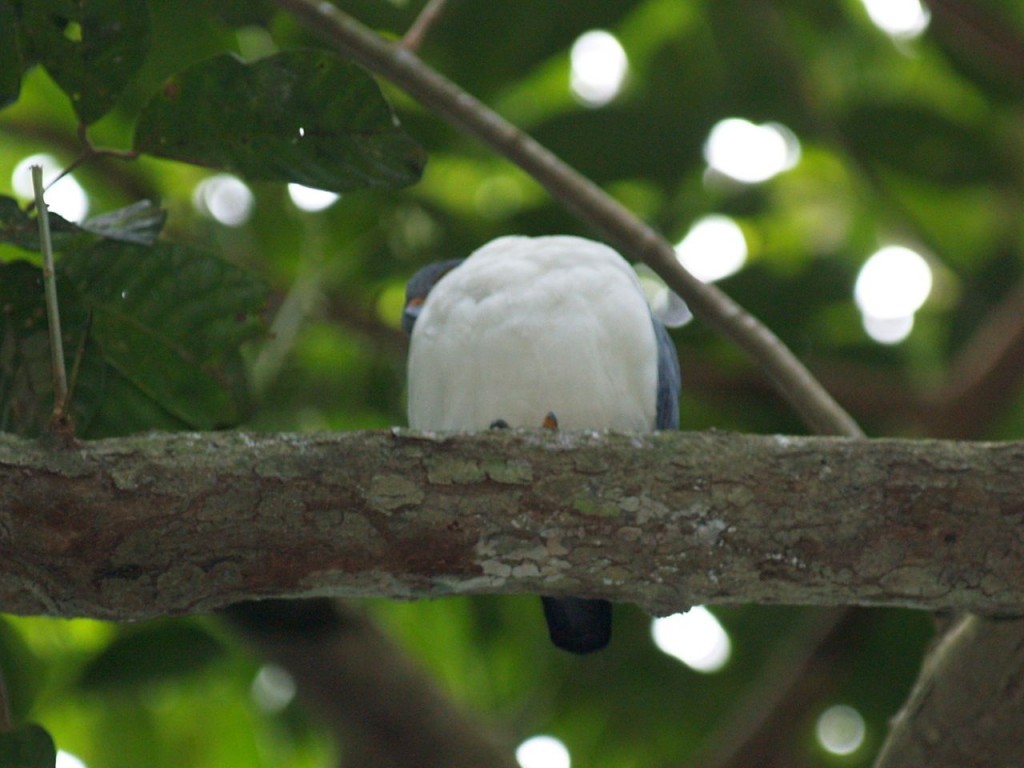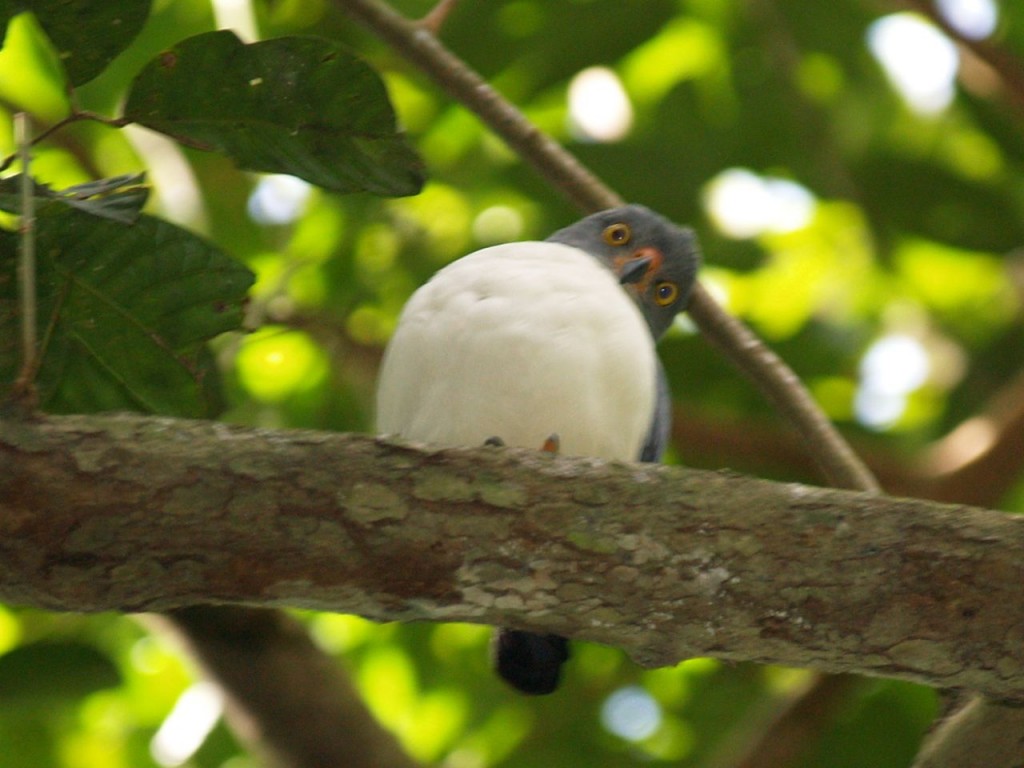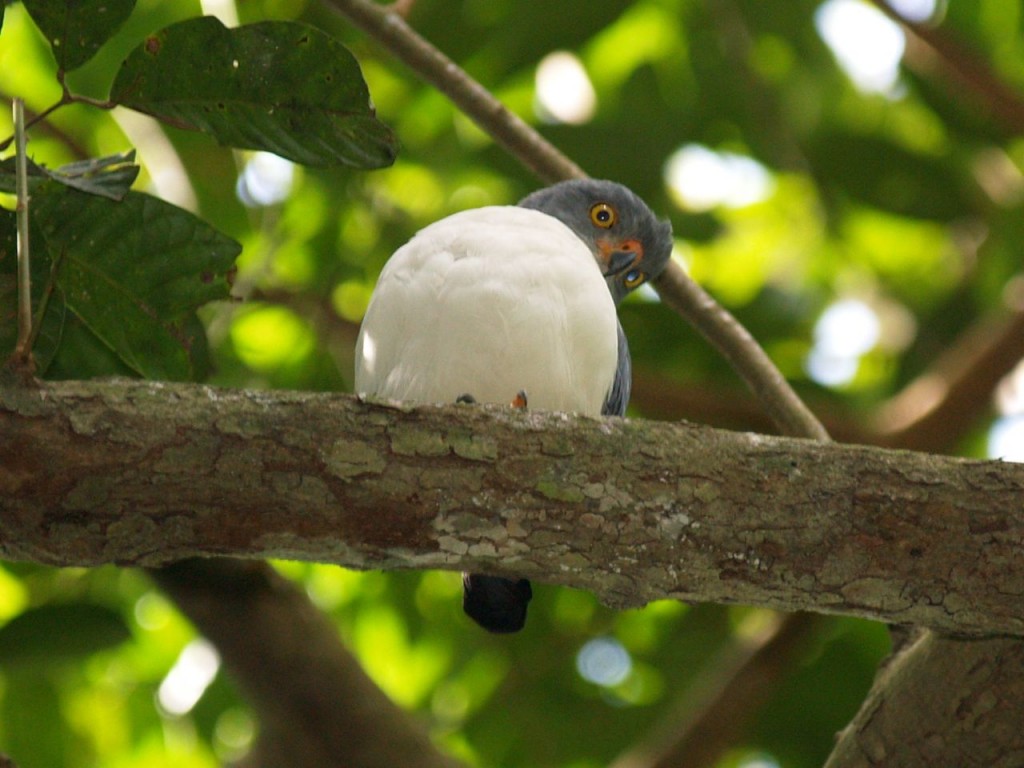There is a funny story about these photographs of a Plumbeous Kite (Ictinia plumbea). I was with a small group of people, including my sister, taking a nature hike to explore Barro Colorado Island in the middle of Gatún Lake, which is part of the Panama Canal. We were standing on a trail discussing wildlife, I think in fact birds found on the island. My sister, who is not really a birder but does like wildlife, points up and asks if that is a bird and what is it. We all look up to a tree limb just a few feet above us and to the side of us. The first photo below is what I initially saw. I didn’t think it was even a bird. It just looked like a snowball siting on the limb. I thought is was a insect or spider web or something. Then the bird moved his head to get a better look at us. Evidently, it too was interested in the wildlife (or humans) found on the island. It just sat up there watching us. It was a mutual fascination society for a short time until we moved on and let it be. One more note, due to the color of the bird’s beak, I think this is a juvenile.
Nature, travel, pets, home renovation, and geekery




Cool encounter! But the bird in your photos is not a plumbeous kite (Icitnia plumbea) but an Accipiter -not sure which since I’m not familiar with all Panama birds, but that should narrow it down for you. Plumbeous kite has a ash-gray chest and head, red eyes and long, pointed wings that would surpass the tail. Also, you’d be hard pressed to find a plumbeous kite perched on a low branch in the understory as these hawks hunt on the wing and tend to perch on exposed branches (same for Mississippi and swallow-tailed kites).